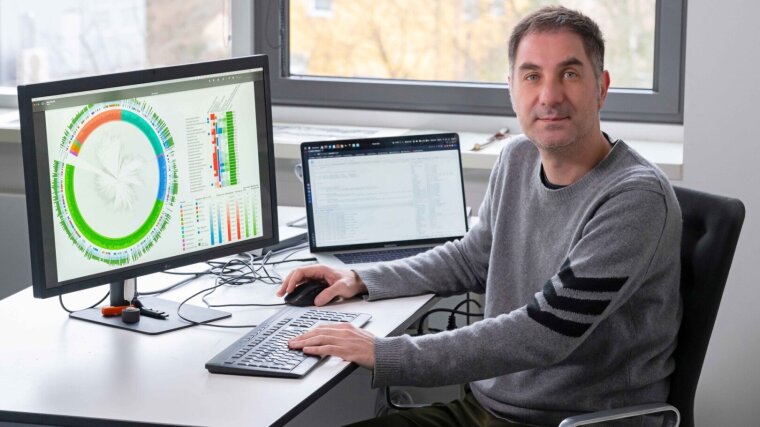
- Life
- Research
Published: | By: Antje Nieber
Environmental changes influence microbial communities, which are crucial for the health of the earth and humans. For instance, altered eating habits with heavily processed foods can lead to disrupted gut flora, or intensive agricultural practices can disturb the carbon cycle in the soil, respectively. A research team from the Cluster of Excellence "Balance of the Microverse" at Friedrich Schiller University Jena has carried out a study to investigate what these changes mean for the very basis of microbial existence. The researchers analyzed DNA sequences from more than 1,500 samples of microbial communities, so called microbiomes, from different habitats to find out how robust or sensitive these tiny creatures are to environmental changes. In their study, the researchers observed that bacterial genera found in many different habitats have larger genomes, providing a potential mechanism for how they survive across such different environments. The findings have now been published in the renowned journal „Cell Reports“External link (DOI: 10.1016/j.celrep.2024.114046).
"We analyzed datasets from aquatic, host, and soil biomes to identify bacteria and fungi that have a wide and narrow environmental distribution," explains Gianni Panagiotou, Professor of Microbiome Dynamics at the Cluster of Excellence "Balance of the Microverse"External link at the University of Jena and group leader at the Leibniz Institute for Natural Product Research and Infection Biology. "We found that certain types of bacteria and some fungi, known as generalists because they can adapt to different environments, tend to dominate their communities and have larger genomes compared to bacteria specialized in specific habitats,” Panagiotou continues.
Bacterial and fungal species studied together
Firstly, the research team examined DNA sequences of bacteria and fungi from publicly available databases. They selected datasets from various regions of the world, including Europe, Asia, and America, and considered various habitats such as water bodies, soils, and different host organisms. "Using special software, we were able to identify the microbes in each dataset. We looked at the many types of bacteria and fungi across all the different habitats. By comparing the datasets, we were able to determine whether certain organisms were generalists, present in and able to thrive in different habitats, or specialists, with strict habitat requirements that limited their distribution,” explains Dr. Amelia Barber, Microverse junior research group leader for Fungal Informatics.
This is the first time that a research team has studied both bacterial and fungal species together on a global scale in order to investigate the adaptability of microorganisms in the midst of diverse and changing habitats. "Bacteria and fungi engage in diverse interactions with each other, shaping their habitats and ecosystem functionality significantly. These interactions include symbiotic relationships, where both partners benefit from each other, and are crucial for understanding ecosystems," adds Amelia Barber.
Generating new insights from databases
The interdisciplinary collaboration of the researchers from the Microverse cluster made it possible to interpret the results of the data-based project. "This has enabled us to gain new insights from public scientific databases into the basic ecological and evolutionary strategies of microorganisms in nature and to show how these tiny creatures adapt to their environment in order to survive over time,” says Bas Dutilh, Microverse Professor of Viral Ecology and Omics at Friedrich Schiller University Jena. "The majority of these organisms are known only by their genomic signatures, which we can identify in databases. Through this analysis, we can also learn a lot about the habitat, functioning and interactions of microbial communities."
Original publication:
Loos D, Filho APDC, Dutilh BE, Barber AE, Panagiotou G. A global survey of host, aquatic, and soil microbiomes reveals shared abundance and genomic features between bacterial and fungal generalists. Cell Rep. 2024 Apr 5;43(4):114046. https://doi.org/10.1016/j.celrep.2024.114046External link. Epub ahead of print. PMID: 38581683.
07745 Jena Google Maps site planExternal link
07745 Jena Google Maps site planExternal link